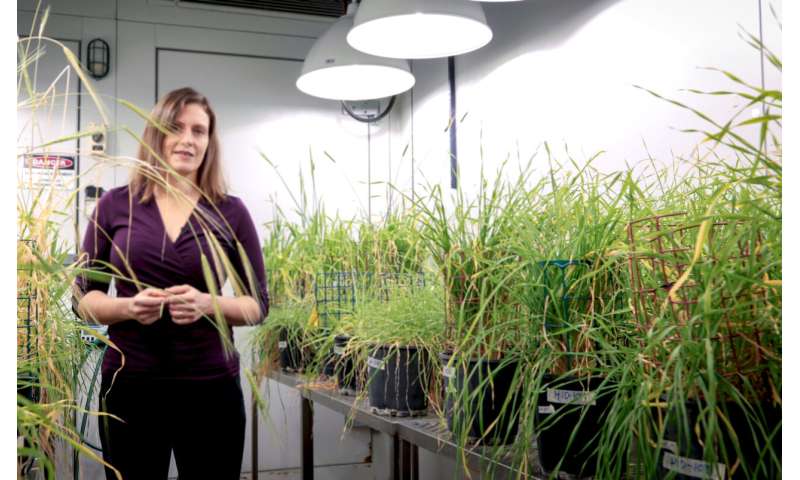Genetic discovery sheds light on sodium accumulation in barley crops
by Science X staff
An international team of scientists have identified a naturally occurring gene variation that influences sodium content in barley crops. The finding could help to advance the development of barley varieties with greater yield and better resilience to varying salt conditions.
In the latest issue of Communications Biology, the research team, led by scientists at the James Hutton Institute together with researchers from the ARC Centre of Excellence in Plant Energy Biology (PEB) describe their identification of a version of a gene in barley plants. The gene variant allows high concentrations of sodium, a component of salt, to accumulate in barley without negative impacts on plant growth.
Salinity is a significant problem for the Australian cereals industry, with potential to negatively affect crop growth in nearly 70 percent of cereal growing regions. While an excessive level of sodium is toxic to most plants, non-toxic concentrations have been shown to improve yields under certain conditions, such as when soil potassium is low.
The researchers found evidence to suggest that the gene variant gives rise to enhanced yield potential in barley crop plants grown in non-saline environments. Barley is Australia's second largest winter cereal by area and volume and underpins important domestic and international trade for animal feed and beer production.
"Our discovery of how variation in this barley sodium transport gene influences grain sodium content could bring benefit to breeders and researchers" said Dr. Caitlin Byrt from PEB and the Australian National University.
"There is potential to use the markers and material we have developed to optimise factors influencing barley quality and germination."
"Seed germination is negatively affected by salinity, and sodium can become a problem when in excess. But it can also be an advantage as an osmotic regulator. This means that tailoring grain sodium content to target different environments could be advantageous."
"Our findings are the result of a large international collaboration, which included scientists with very different backgrounds, and our achievement reflects the successful team effort in elucidating the mechanisms behind grain sodium accumulation," said co-author Dr. Stefanie Wege from the PEB node at the University of Adelaide.
Dr. Kelly Houston, lead author of the study from the James Hutton Institute said "this particular version of [the sodium transport gene] is present in 35 percent of contemporary barley genetic material, compared to being almost absent in the wild barley and landraces screened, which means there is potentially an advantage to having it in future varieties.
"This paper represents five years' work. We are delighted that our discovery can provide real benefits in terms of understanding this important trait."
More information: Kelly Houston et al. Barley sodium content is regulated by natural variants of the Na+ transporter HvHKT1;5, Communications Biology (2020). DOI: 10.1038/s42003-020-0990-5
Journal information: Communications Biology
Provided by ARC Centre of Excellence in Plant Energy Biology